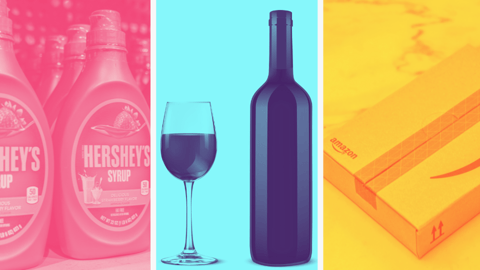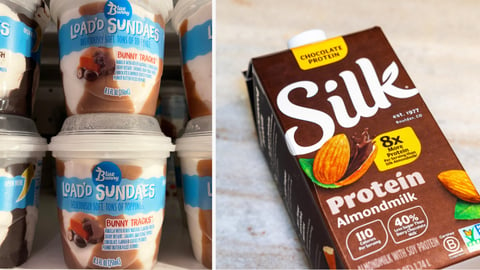Get Ready For a ‘Decade of the Home’
No amount of crystal ball gazing could have predicted the full impact that the Covid-19 crisis would have on almost every facet of our lives. The pandemic is reshaping so much about the way we live, work, connect, consume, and even think. And it is all happening so quickly. Trends that have been progressing steadily for years have been suddenly accelerated to a degree no-one could have foreseen.
It’s clear that consumption is looking very different than it did just months ago. The crisis has brought with it a reckoning for brands of all kinds, challenging industry leaders and startups alike to reach consumers who are mostly at — or close to — home.
Enter the “decade of the home”
The Accenture Consumer Insights team has been examining not just what consumers are doing today, but what this implies for their long-term habits and behaviors. The scale of the shifts in preference we are now seeing are dramatic. And as the crisis continues, they have become more sharply defined.
This leaves us with an inescapable conclusion: The crisis will define consumption for the next decade; the 2020s will be the “decade of the home.” It has become the workplace, the schoolroom, the place to try new hobbies, the place to socialize and a safe sanctuary.
Home is where the heart is
The redefinition of the consumer’s relationship with the home is being shaped by two factors. First, the stay-at-home orders appear to be introducing consumers to new activities and ways of socializing — cooking, livestreaming, DIY and more — all amplified by digital tools and interactions. Not only do they enjoy these experiences, but they also plan to continue them over the long term. Second, it has caused both employers and workers to rethink the role of the office and virtual work, moving a host of occasions into the home.
Consider how food and beverage companies will need account for this reality. It is a reversal of years of growth in out-of-home channels; it is a renewal of the art of cooking at home. It is a dramatic change in the food and beverage occasions which defined decades past; convenience has a different meaning at home than on the go. It means creating superior experiences for consumers — not just ones they choose because they are unable or unwilling to leave their homes.
Many are doing so already. Unilever brand Knorr created Knorr@Home, offering healthy and nutritious recipes and live-streamed cook-along tutorials by local chefs and influencers. Intelligentsia Coffee set up Intelli Celly, a telephone hotline that provides direct access to trained baristas to answer questions from its community of coffee lovers.
New York based Shake Shack is going one step forward by taking the “eating out” experience directly into the home. The Shack Camp service contains (most of) what you need to recreate rituals of the warmer months, including lemonade stands, ice cream sundaes, campfire materials, water balloons, and of course burger discounts. This comes after it moved quickly to launch a number of e-commerce initiatives during the pandemic which included selling boxed kits of burgers for people to cook at home.
Well before Covid-19, social media and communications platforms were an inextricable part of daily life. And we have seen examples of brands moving quickly to create new social experiences during this crisis. For instance, Otherland, a direct-to-consumer candle company, created a series of “fireside chats” offering people advice and insight from its network of female influencers and entrepreneurs from inside their own homes on topics like creating a home sanctuary and mood-boosting activities. And cookware brand Equal Parts is helping people make meals out of what they already have in their kitchens with its “Text-a-Chef” service.
Tap into the power of community
There are socially positive sides to this re-centering around the home, too. Nearly four in five households with children say they’re feeling more connected as a family. And with more time to spare, three in five consumers have been taking the opportunity to build their skills in areas like cooking and homebrewing.
More than half have been working on home improvement. Savvy companies can tap into this creative experimentation and these newfound passions to build deeper affinity with their customers.
As well as dramatically increasing their buying online, consumers are switching to omnichannel services like digital chat, and virtual consultations. It calls for food and beverage companies to get more creative, experimenting with new ways of engaging online and marketing strategies that promote products and activities that will continue to appeal, even after the pandemic passes.
Just look at what cookware brand, Thermonix has done with its virtual “Quarantine Kitchen.” Known for its in-person sales model, the company was quick to tap into the surge in demand for culinary experimentation and how-to, allowing people to book online cooking demos with its sales team — a clever adaption of its sales model and a potential way of building a community of “fans”.
Another way companies can build a deeper connection with people, might be to think small and local. Demand for local goods — and local brands — is growing. Our research shows more consumers want to shop at neighborhood stores and want to buy more locally sourced produce. The pandemic is also changing how people view the societies they live in, with 62% of global consumers saying they feel more connected to their communities.
Food and beverage companies can respond to this demand by looking to highlight the local provenance of their products. They should also consider working with smaller-format local stores and venues — who are especially vulnerable during this time.
Consider Movimento NOS, a coalition created by eight of the main food and beverage companies in Brazil, and designed help small retailers face challenges associated with operating (and re-opening) during the pandemic by providing guidance on sanitizing practices, streamlining stock replenishment routines, and offering relevant market information (among other things) to help with balancing supply and demand.
Look to the future
In the space of a few months, the landscape has changed remarkably, and we will likely face continued changes and adaptations in the years to come. There will be no return to “business as usual.”
In many ways, this pandemic has created an opportunity for companies to attract and engage with consumers in innovative new ways. Just as people are seeking to change for the better in this new era, so can businesses. This is the time to focus on the possibilities the future holds.
Oliver Wright is global lead, consumer goods & services at Accenture.





